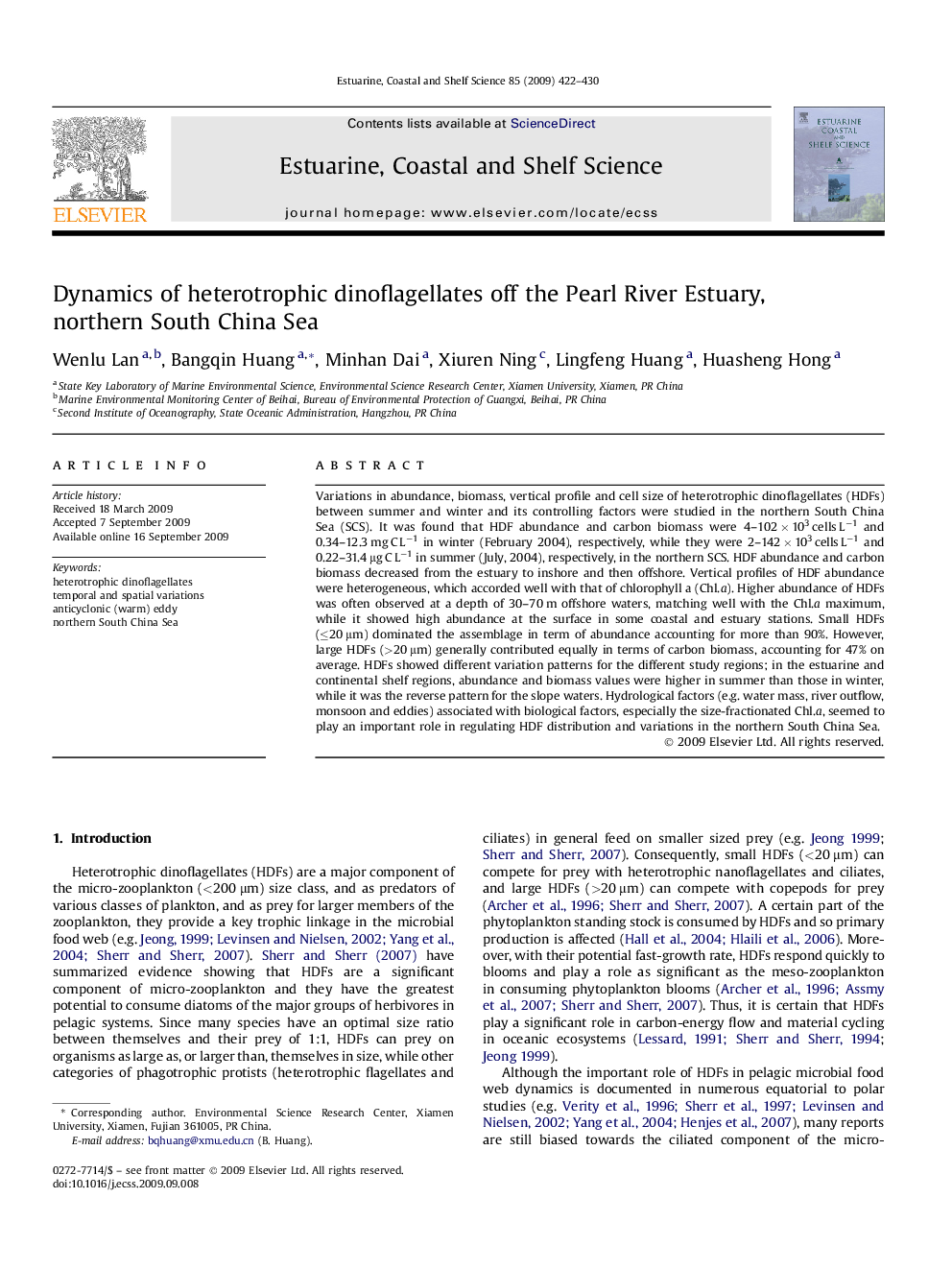| Article ID | Journal | Published Year | Pages | File Type |
|---|---|---|---|---|
| 4540719 | Estuarine, Coastal and Shelf Science | 2009 | 9 Pages |
Variations in abundance, biomass, vertical profile and cell size of heterotrophic dinoflagellates (HDFs) between summer and winter and its controlling factors were studied in the northern South China Sea (SCS). It was found that HDF abundance and carbon biomass were 4–102 × 103 cells L−1 and 0.34–12.3 mg C L−1 in winter (February 2004), respectively, while they were 2–142 × 103 cells L−1 and 0.22–31.4 μg C L−1 in summer (July, 2004), respectively, in the northern SCS. HDF abundance and carbon biomass decreased from the estuary to inshore and then offshore. Vertical profiles of HDF abundance were heterogeneous, which accorded well with that of chlorophyll a (Chl.a). Higher abundance of HDFs was often observed at a depth of 30–70 m offshore waters, matching well with the Chl.a maximum, while it showed high abundance at the surface in some coastal and estuary stations. Small HDFs (≤20 μm) dominated the assemblage in term of abundance accounting for more than 90%. However, large HDFs (>20 μm) generally contributed equally in terms of carbon biomass, accounting for 47% on average. HDFs showed different variation patterns for the different study regions; in the estuarine and continental shelf regions, abundance and biomass values were higher in summer than those in winter, while it was the reverse pattern for the slope waters. Hydrological factors (e.g. water mass, river outflow, monsoon and eddies) associated with biological factors, especially the size-fractionated Chl.a, seemed to play an important role in regulating HDF distribution and variations in the northern South China Sea.
